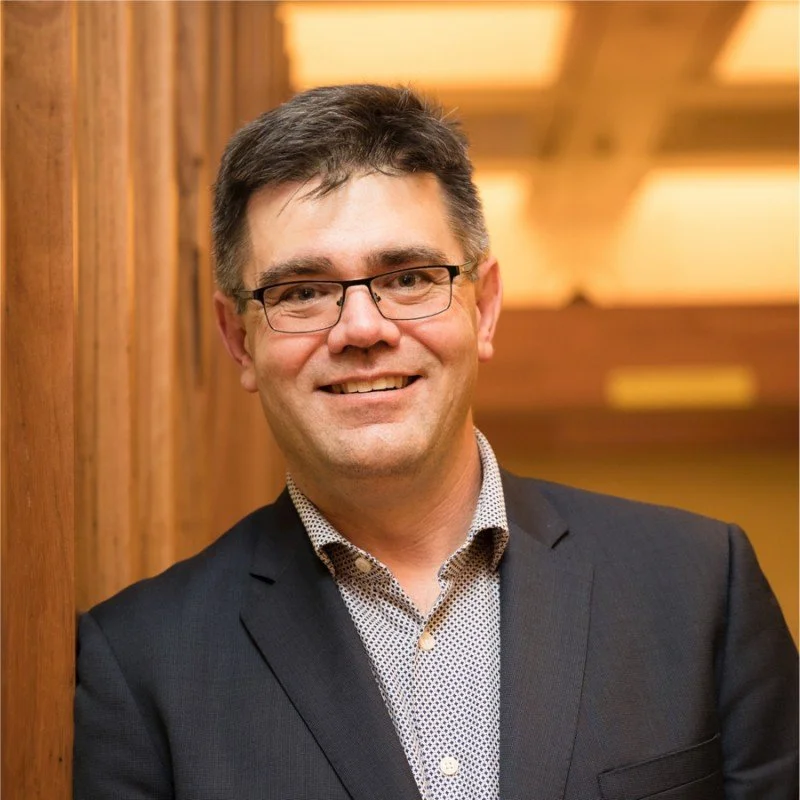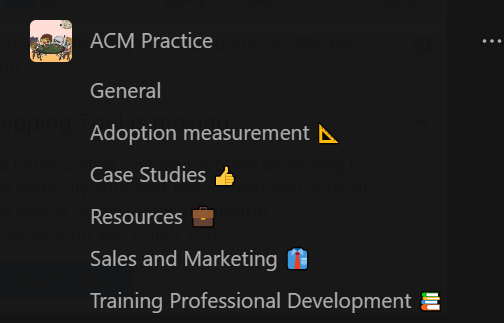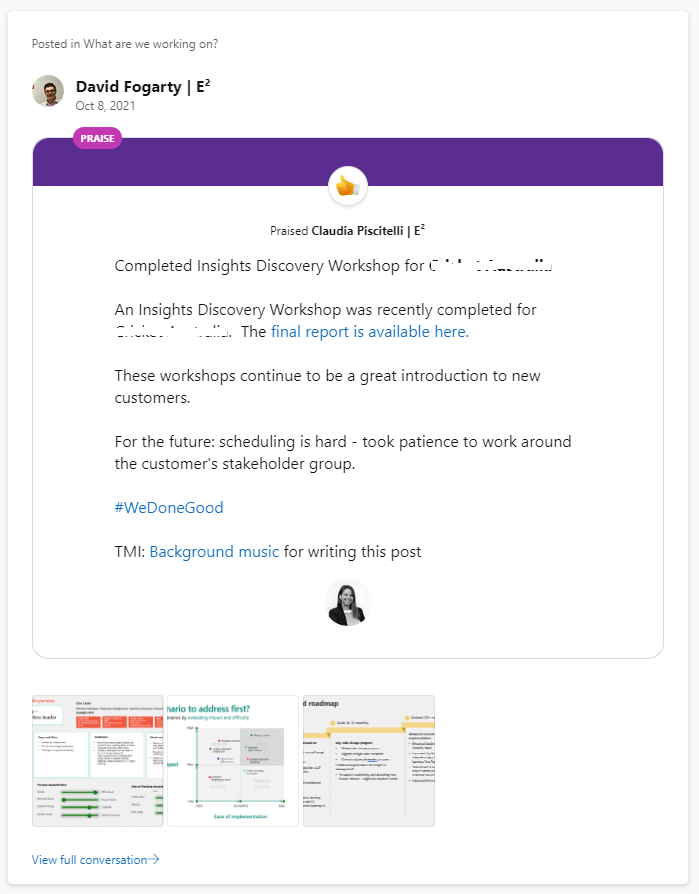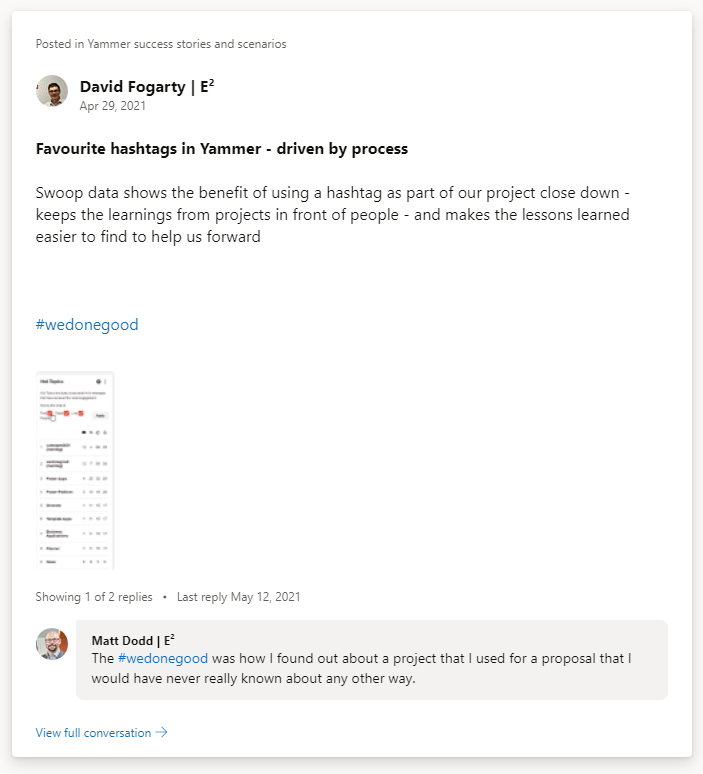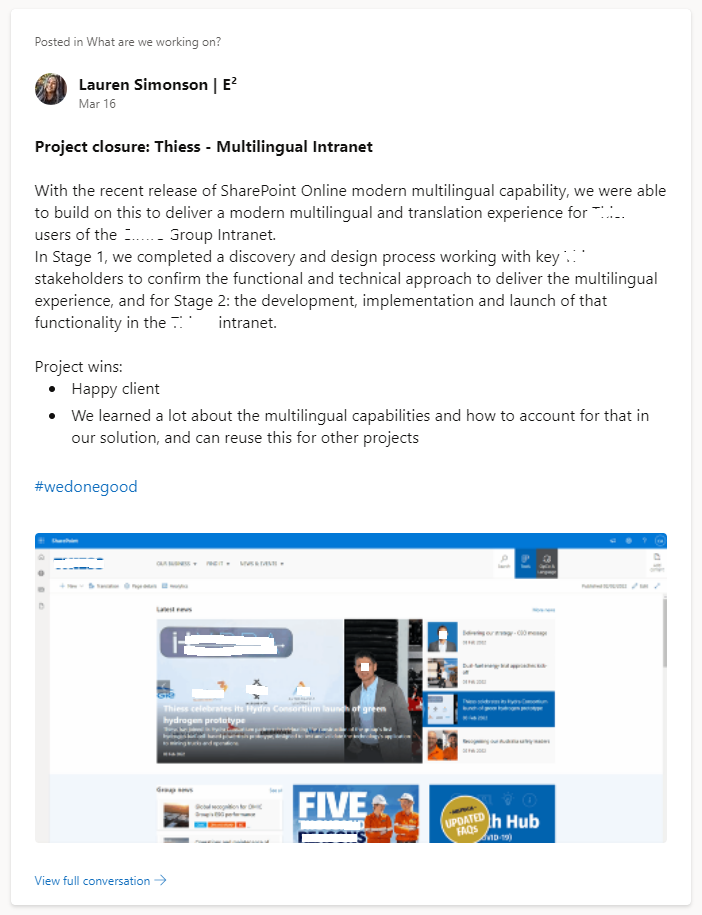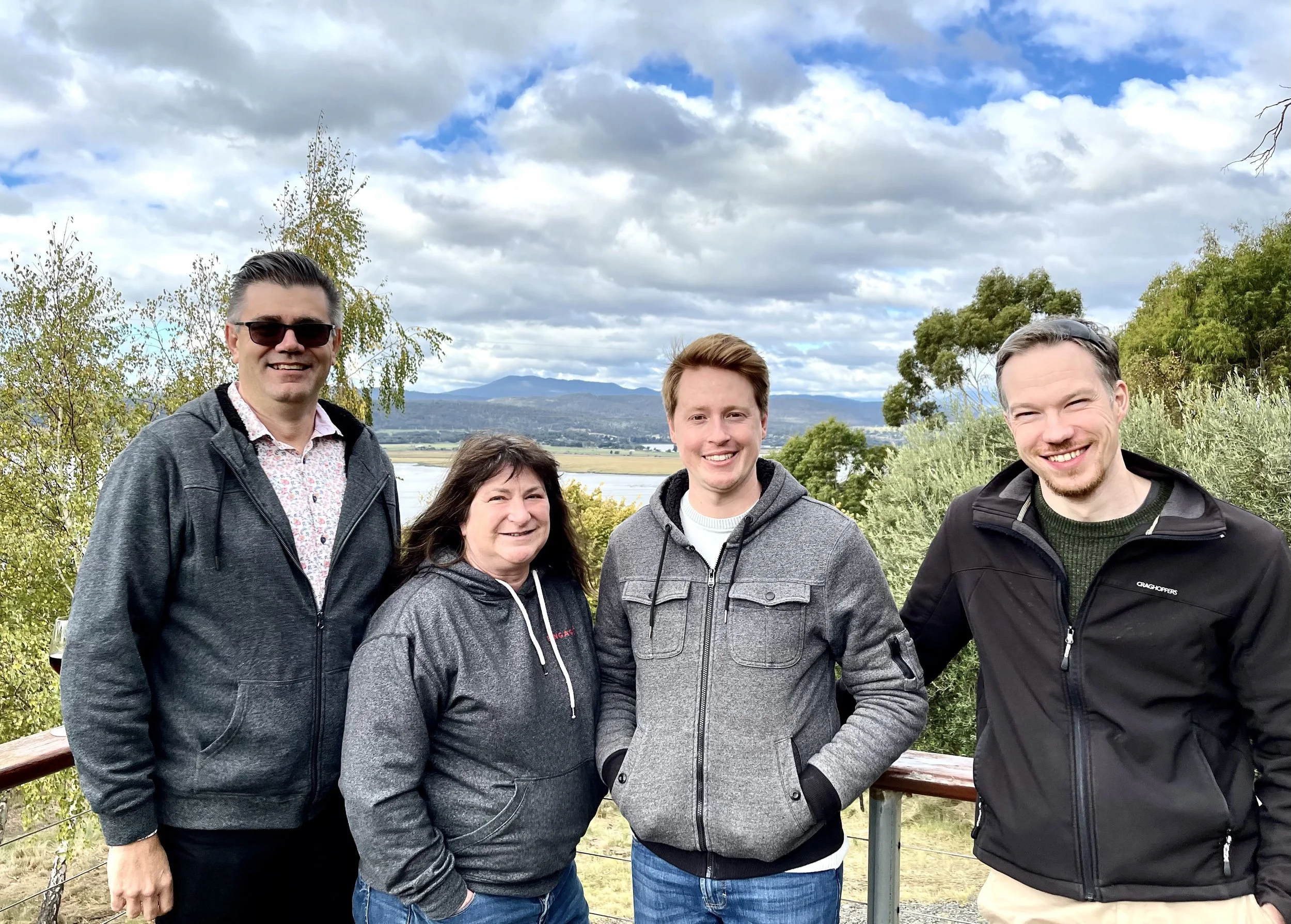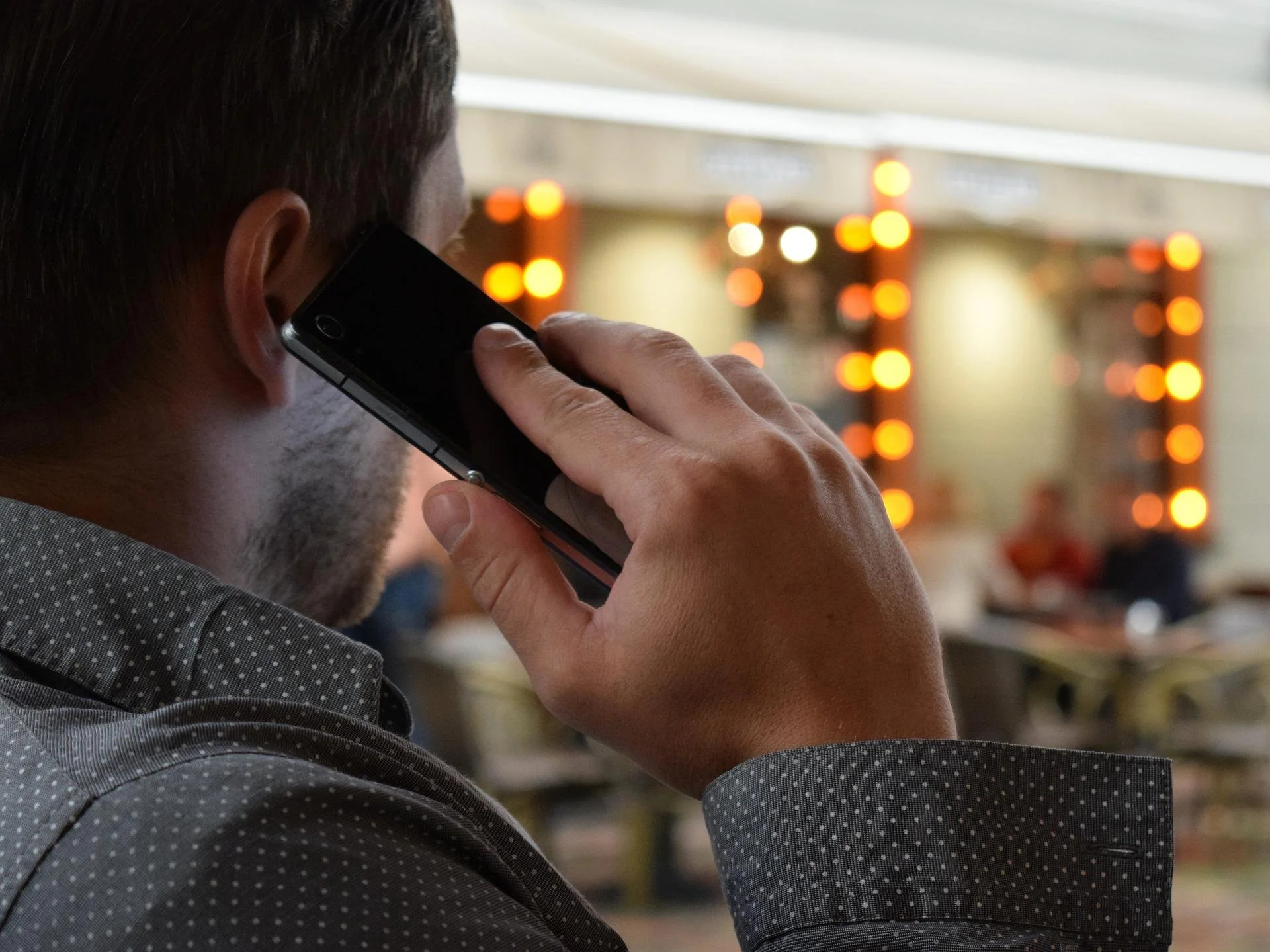Engage Squared – where collaboration is non-negotiable
Senior project manager David Fogarty doesn’t have Outlook installed on his desktop. On the rare occasions he needs to check email, he’ll open the browser and log onto Outlook.
David works in a digital workspace all day, every day. Yet to work efficiently and collaboratively, he knows email is rarely necessary. David works within the Microsoft 365 suite, primarily in Microsoft Teams, along with his eight colleagues who make up the Project Management Office (PMO) team at consulting company Engage Squared.
David Fogarty, Senior project manager, Engage Squared.
The PMO team – who go by the name Team Awesome – have a non-negotiable way of working out loud, whether that’s internally as a team, or for any project with a client. When Engage Squared’s PMO team was informed they were among the top three small-size departments (less than 20 people) in SWOOP Analytics’ 2022 M365 benchmarking, frankly, they weren’t at all surprised because all their work is carried out with a focus on collaboration.
In ranking the top departments in SWOOP’s M365 benchmarking, all seven of SWOOP’s Collaboration Habits - Email Liberated, Asynchronous Collaborator, Chat Liberated, File Sharer, Community Contributor, Screen Sharer and Camera Confident – are combined to give an overall collaboration score for every member of the department, which is then compared with the 3,773 departments benchmarked in the 2022 report.
Non-negotiable kick off around collaboration – no more email
Every time Engage Squared begins a project with a new client, a new team is created on Microsoft Teams, whether it be on the client’s Teams tenant or on Engage Squared’s Teams tenant. A new channel in that team will then be created for every project.
An example of a team on Engage Squared’s Microsoft Teams tenant.
Every file, every shared document, every task on Microsoft Planner, every OneNote related to that project – it’s all shared in the relevant Teams channel. Conversations are also carried out in the channel, not in chat, for everyone to have total transparency.
“At every project kick-off we ask the customer if they would like us to host a shared team, or them to host a shared team, so that forces the channel for the project,” David said.
“We’ll set ourselves up with a team per customer and then a channel per engagement. So communication is bundled together on Teams.”
Ruby Bailey, Senior Project Manager, Engage Squared.
Senior Project Manager Ruby Bailey describes the process as “non-negotiable”. As for email, if anyone does slip up and send an email rather than post in the Teams channel, the email is immediately forwarded to the Teams channel and the team members are @mentioned, alerting them to the content.
“That way, if somebody slips up and goes back to email, then we bring it back to Teams,” Ruby said.
There is usually an agreement that contracts and status reports are emailed to the client but David said they are also copied into the relevant Teams channel for anyone (with access) to review.
Stephen Monk, CEO, Engage Squared.
“This team has built some really great work practices to embrace working out loud and being transparent, with a bit of tech automation to encourage and reinforce that,” said Engage Squared CEO Stephen Monk.
“In particular, we have a ‘reporting’ channel in this team, which project managers cc their weekly or monthly reports in, which means that progress on project delivery and any risks or issues that we're having are really visible to the rest of the team, and to our delivery management.
“We then have a bit of automation which pulls those reports into a dashboard so we can track to make sure all of our customers are being kept up to date, and it automatically attaches those reports to our project management tool, which reinforces this culture.”
#WeDoneGood – full circle on M365 - start with Teams, end with Yammer
At the end of each project, a summary of the project is shared on Yammer, along with any lessons learned. Each post includes the hashtag #WeDoneGood and data from SWOOP Analytics shows it’s the No.1 Hot Topic on Engage Squared’s Yammer network. (Ruby also revealed there is another cheeky hashtag used for projects that didn’t go so well).
“When we write the project summary of what happened, with a few lessons learned, you mention the consultants who worked on the project and it just invites ‘atta-boys’ and attention as projects work their way to the end,” David said.
“So there’s a process at the beginning and a process at the end.”
An example of a #WeDoneGood Yammer post.
With Engage Squared offices and colleagues spread around the world, sharing the lessons learned on Yammer allows every employee to gain knowledge from the experience and learn what worked and what didn’t. In this way, the PMO team is participating in organisation-wide social learning, which helps deepen Engaged Squared’s project management core competency. These posts are then reviewed on a monthly basis using a filter search, David said.
More examples of a #WeDoneGood Yammer posts from the PMO team at Engage Squared.
“This is the way we work and if people start doing it from the get-go, that’s the real key,” Ruby said.
“Nobody likes change half-way through a project. If you’re doing this right from the get-go, people very quickly see the real value and they’re on board for this and we like to set a good example for clients.”
How to hold hybrid meetings
For Engage Squared’s Team Awesome to top the collaboration score across the thousands of departments analysed in SWOOP’s benchmarking, they were strong performers in all seven of SWOOP’s Collaboration Habits, including screen sharing and using the camera during online meetings.
As more employees return to hybrid work, it begs the questions; What do hybrid meetings look like? How do you screen share in a hybrid meeting? Do cameras stay on?
Team Awesome has put together a list of tips and tricks to support employees to run better and more effective hybrid meetings.
In a nutshell, hybrid meetings work when those in the office take their laptop to a meeting room, along with everyone else who is attending in-person, and everyone looks into their personal laptop with a headset on.
Ruby shared Team Awesome’s tips and tricks.
Before the meeting:
Make sure you have a clear agenda so people know if they should attend or not, saving everyone time.
Utilise the default meetings settings in Outlook. For example, delay start time by 5 minutes or end early by default so you can have a break.
Use whiteboard from Microsoft Teams so you can set one up ahead of time - save time, see visuals, interactive for all.
Make people aware of being late or any issues, utilising chat function.
During the meeting:
Record - so people who were unable to join can watch it back later.
Make it clear the purpose of the chat functionality at the beginning. For example, questions or ideas so you do not interrupt the flow and can come back.
Remote by default mindset, even when back in the office. People join from their laptop regardless, with headset on.
Face your laptops, no cross-chat in the meeting to ensure people who are remote feel included.
Use PowerPoint Live when sharing a presentation. It enables you to co-present, enables you to share presenting so you are not saying; “next slide please”.
Vision impaired, can't use screen reader when you are simply sharing your screen, PowerPoint Live solves this.
Use immersive reader so people with dyslexia can consume content. Can translate content for you into different languages if selected by viewers, can click on links live, so you don't have to wait until you share the deck to see.
Encourage team to use reactions to give real-time feedback, iterate, focus etc.
After the meeting:
Follow up with notes and actions.
If you formalise in Planner, make sure you update Planner just before the meeting.
@mention people, so it ends up on their “to do” list.
Teams chat versus channels – aim for 80% working out loud in channels
Along with every Teams channel created for a project, Engage Squared also usually creates a Teams chat. Which begs the question, when do you use channels and when do you use chat?
“For each project we have a chat function which is for quick chats that don’t necessarily require anything formal around them,” Ruby said.
“The channel is for working out loud, talking about the project, talking about things that we need to do, tracking tasks, sharing information that everybody needs to know.
“The project chat is more about; ‘Hey, I’m running late for a meeting. Can you cover for me?’”
Using channels v chat in this way is usually discussed at the initial kick-off project meeting.
Ruby said the rule of thumb is 80% working out loud in the Teams channel, @mentioning the correct people, updating Planner, holding project stand-ups in the channel, sharing files and notes and scheduling meetings. This allows for visibility, governance, hand overs, and covering sick leave or holiday leave.
David and Ruby have never met face to face, so they think
David, who is based in Sydney, and Ruby, who is based more than 700 kilometres away in Melbourne, have worked together every day for the past 18 months and feel like they know each other intimately on a professional basis. Yet they realised they have never met face to face. Well, they don’t think they have, but neither is 100% sure.
“Working the way we do, you feel like you’ve known everyone forever,” Ruby said.
“We see each other every day, talk with each other every day. It’s really hard to say if you’ve met them or not, or if you do meet them in person, you feel like you’ve known them for years.”
Four of Engage Squared's Team Awesome met face to face for the first time in late April, 2021. L-R: David Fogarty, Elaine Batton, Daniel Margison and Ian Anderson.
Walk and talk meetings
As hybrid work and work from home continues to evolve, Engage Squared is pushing the goal posts to experiment with different types of meetings.
As much as camera on and screen sharing practices are encouraged, there are times when camera on and screen sharing is unnecessary for internal meetings and Engage Squared encourages employees to make the most of these meetings by taking a walk while talking, or even multitasking by doing something manual, like cleaning the bathroom or unpacking the dishwasher.
“We also have a lot of internal meetings and we do encourage people to get out and go for a walk, especially during lockdown,” Ruby said.
“For many one-on-one internal meetings, I’ll ask if we need the screen and, if not, I’ll ask if they mind if I go for a walk around the block. 90% of the time, they’re happy with that.”
During the COVID-19 lockdowns, Engage Squared gave employees an expense account to grab a coffee to encourage them to get out of the home office for one-on-one meetings and team catch-ups.
“This policy continues today, to help break up meetings and replicate some of the magic of in-person conversations across geography and time zones,” Stephen said.
“Combined with the company’s tech fund, which allows staff to purchase new equipment for their home office, initiatives like the coffee allowance help staff to stay mentally and physically engaged.”
Ruby said recently Engage Squared has also encouraged staff to use audio calls when it’s appropriate so they can multitask with manual jobs.
Think about it. If you’re listening in to a meeting on your computer but you’re not required to actively participate, chances are, even with the camera on, you glance at email, or Yammer, or maybe LinkedIn, and see a message you reply to.
Often when you’re doing something physical, like going for a walk or unpacking the dishwasher while also listening to a call, you’re much more focused on the conversation than if you were at your desktop and being distracted by sending an email.
“For example, I was cleaning the bathroom the other day and I logged onto one of the resources calls and I actually listened to every single word because I was scrubbing, not checking my emails,” Ruby said.
“It’s proven you absorb more of the information than when you’re at your desktop, and multitasking and maybe checking emails. It’s a very recent thing we’re doing.”
It’s examples like this that make it unsurprising Engage Squared made the 2022 Financial Review Boss Best Places to Work list.
Learn more about Team Awesome in this case study and how a bot is helping with innovation at Engage Squared in this case study.


